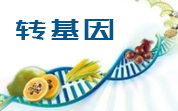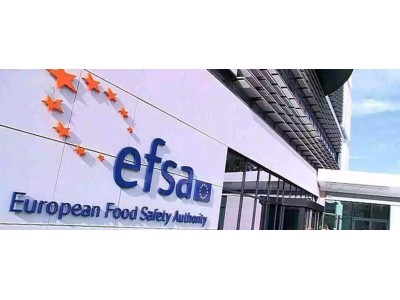гҖҖгҖҖжҚ®дәҶи§ЈпјҢиҝҷз§ҚйЈҹе“Ғй…¶жҳҜз”ұиҪ¬еҹәеӣ й»‘жӣІйңүиҸҢж ӘAE-TGUз”ҹдә§зҡ„пјҢж—ЁеңЁз”ЁдәҺзғҳз„ҷиҝҮзЁӢгҖҒи°·зү©еҠ е·ҘгҖҒй…ҝйҖ иҝҮзЁӢе’Ңж·ҖзІүеҠ е·ҘдёӯпјҢд»Ҙз”ҹдә§и‘Ўиҗ„зі–зі–жөҶе’Ңе…¶д»–ж·ҖзІүж°ҙи§Јзү©гҖҒь/div>
гҖҖгҖҖз»ҸиҝҮиҜ„дј°пјҢ专家е°Ҹз»„и®ӨдёәпјҢеңЁйў„жңҹзҡ„дҪҝз”ЁжқЎд»¶дёӢпјҢдёҚиғҪжҺ’йҷӨйҘ®йЈҹжҡҙйңІеј•иө·иҝҮж•Ҹе’ҢиҜұеҸ‘еҸҚеә”зҡ„йЈҺйҷ©пјҢдҪҶиҝҷз§Қжғ…еҶөеҸ‘з”ҹзҡ„еҸҜиғҪжҖ§еҫҲдҪҺгҖӮж №жҚ®жүҖжҸҗдҫӣзҡ„ж•°жҚ®пјҢе°Ҹз»„еҫ—еҮәз»“и®әпјҢиҜҘйЈҹе“Ғй…¶еңЁйў„жңҹзҡ„дҪҝз”ЁжқЎд»¶дёӢдёҚдјҡеј•иө·е®үе…ЁйҡҗжӮЈгҖӮйғЁеҲҶеҺҹж–ҮжҠҘйҒ“еҰӮдёӢпјҡ
гҖҖгҖҖThe food enzyme ҰБ-glucosidase (ҰБ-d-glucoside glucohydrolase; EC 3.2.1.20) is produced with the non-genetically modified Aspergillus niger strain AE-TGU by Amano Enzyme Inc. The food enzyme is free from viable cells of the production organism. The food enzyme is intended to be used in baking processes, cereal-ba
sed processes, brewing processes and starch processing for the production of glucose syrups and other starch hydrolysates. Since residual amounts of total organic solids (TOS) are removed by the purification steps applied during the production of glucose syrups, dietary exposure was o
nly calculated for the remaining three food processes. ba
sed on the maximum use levels recommended, dietary exposure was estimated to be up to 0.64 mg TOS/kg body weight (bw) per day in European populations. Genotoxicity tests did not raise a safety concern. The systemic toxicity was assessed by means of a repeated dose 90-day oral toxicity study in rats. The Panel identified a no observed adverse effect level of 1,062 mg TOS/kg bw per day, the highest dose tested, which when compared with the estimated dietary exposure, results in a margin of exposure of at least 1,650. A search for similarity of the amino acid sequence of the food enzyme to known allergens was made and no match was found. The Panel co
nsidered that, under the intended co
nditions of use, the risk of allergic sensitisation and elicitation reactions by dietary exposure cannot be excluded, but the likelihood for this to occur is co
nsidered to be low. ba
sed on the data provided, the Panel co
ncluded that this food enzyme does not give rise to safety co
ncerns under the intended co
nditions of use.
гҖҖгҖҖ
жң¬ж–Үз”ұйЈҹе“ҒдјҷдјҙзҪ‘йЈҹе“Ғиө„и®Ҝдёӯеҝғзј–иҫ‘пјҢжңүд»»дҪ•з–‘й—®пјҢиҜ·иҒ”зі»news@www.sqrdapp.comгҖҒь/span>










 ең°еҢәпјҷь/font>
ең°еҢәпјҷь/font>

 欧зӣҹиҜ„дј°иҪ¬еҹәеӣ зҺүзұіMO
欧зӣҹиҜ„дј°иҪ¬еҹәеӣ зҺүзұіMO
 欧зӣҹиҜ„дј°дёҖз§ҚйәҰиҠҪзі–ж·Җ
欧зӣҹиҜ„дј°дёҖз§ҚйәҰиҠҪзі–ж·Җ зҫҺеӣҪжӢҹж’Өй”ҖиӢҘе№ІиӮүзұ»еҸүь/a>
зҫҺеӣҪжӢҹж’Өй”ҖиӢҘе№ІиӮүзұ»еҸүь/a> йІҒе…¬зҪ‘е®үеӨ 37060202000128еҸ¶ь/a>
йІҒе…¬зҪ‘е®үеӨ 37060202000128еҸ¶ь/a>



